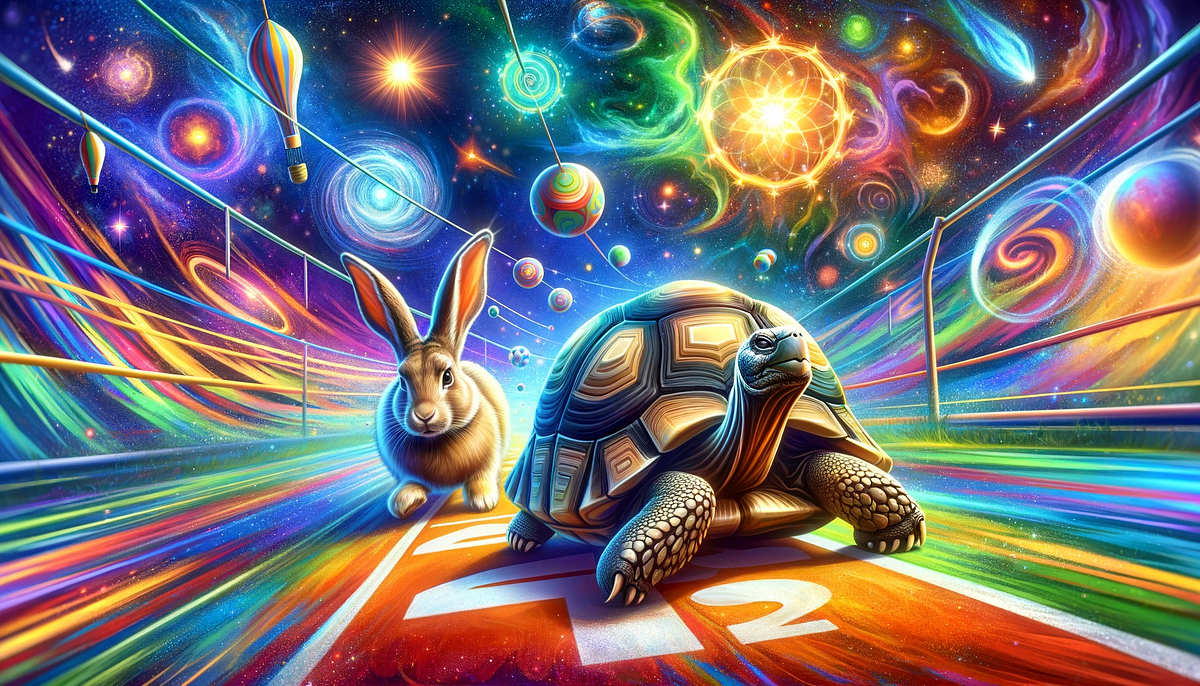
The Paradox of Pursuit and the Progress Beyond Goals
We often encounter individuals who embody the paradoxical traits of the hare and the tortoise. I was one such person.
I, akin to the hare, possessed boundless energy and ambition, my mind ablaze with ideas, my body yearning for action. I was a dreamer, a visionary, convinced of my potential to achieve great things. I viewed every goal like a slow-moving tortoise. Sooner or later, I was going to catch up with them and then go past.
I failed to realize that I had made my goal the tortoise itself. It was slow, but nonetheless, it was moving away from me at a steady pace. I was chasing the tortoise itself as my goal.
The goal, by definition, lay ahead, an ever-receding target that moved further away with each step I took, albeit at a slower pace than me. I wasn’t worried. I knew I would soon reach the goal. After all, I could run at several times the speed of the tortoise.
To my shock, every time I reached the goal, I found it to be just ahead of me. Then I reached where I saw it standing, and it was still ahead. I tried a few times, then dozens of times. Same result! It still remained just ahead of me.
This seemingly paradoxical pursuit mirrored the inherent nature of goals. We set goals as beacons guiding our path, believing that surpassing them will bring us fulfilment. However, the moment we focus on overtaking the goal, we inadvertently shift our attention away from the journey itself.
The tortoise, on the other hand, represented a different approach to progress. It was not fixated on reaching a destination but on the journey itself. Regardless of the distance ahead, it moved with unwavering determination.
Consider this: If a goal is a fixed distance away and you move towards it faster than it recedes, it still remains ahead. For instance, If you are 10 times faster and the goal moves away at one-tenth the speed you approach it, it will always be a fraction ahead. The distance will keep reducing to 1/10, 1/100, 1/1000, and so on but it will never become zero. This is a paradox of progress, where the goal seems perpetually out of grasp if you focus on it, emphasizing that real achievement lies in the journey, not just the destination.
In the pursuit of personal growth and self-improvement, we often set goals as milestones along the way. But if we become fixated on achieving these goals, we may lose sight of the importance of the journey itself.
The tortoise, with its unwavering pace and determination, reminds us that true progress lies not in reaching a specific destination but in embracing a continuous process. It is not about chasing a goal but about becoming the tortoise itself — a symbol of perseverance, resilience, and the ability to adapt to ever-changing circumstances.
This shift in perspective allowed me to embrace the tortoise’s philosophy, liberating myself from the confines of chasing a goal. I no longer felt the pressure to overtake and prove my superiority. Instead, I focused on my own pace and the rhythm of my journey.
And as I did, I discovered a profound truth: when we stop chasing the goal, we create the space for ourselves to move freely. The goal, once an elusive target, becomes a mere checkpoint along our path.
The tortoise, once a symbol of my inadequacy, became a symbol of my newfound freedom. I no longer felt compelled to surpass it; I simply allowed it to exist alongside me, a reminder of the importance of perseverance and resilience.
By embracing the paradoxical nature of the hare and the tortoise, we can embark on a path of true progress and self-realization, one that transcends the limitations of chasing goals. We can become the hare and the tortoise both, a harmonious blend of ambition and resilience, forever moving forward, forever evolving.
Please follow for articles based on my original reseach Vijay S Sharma and mu poetry Vijay’s Poetry @WordView